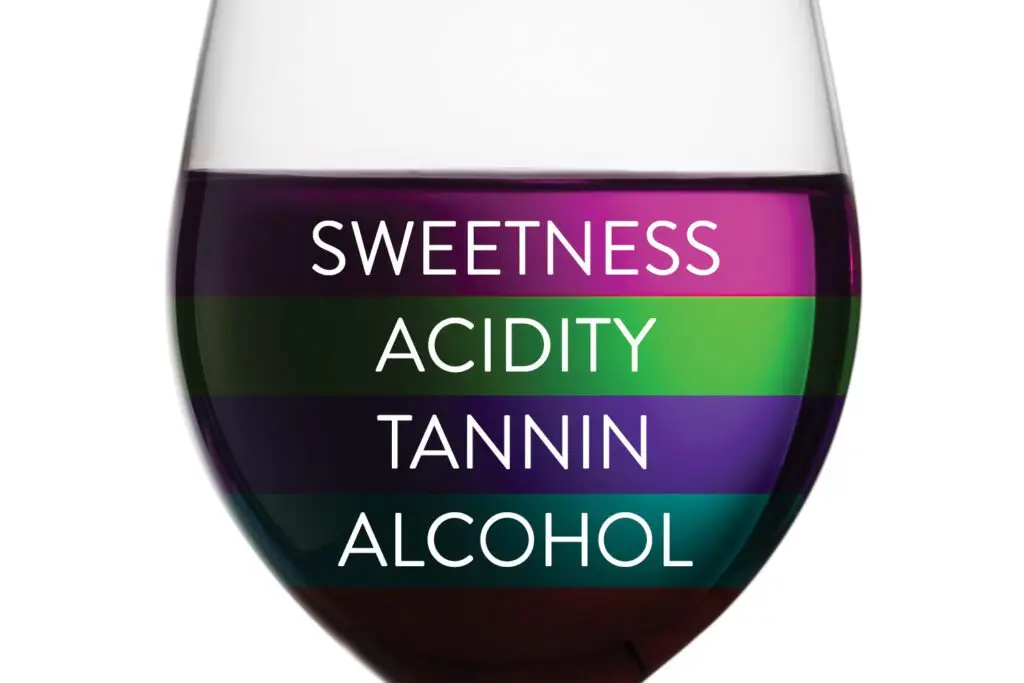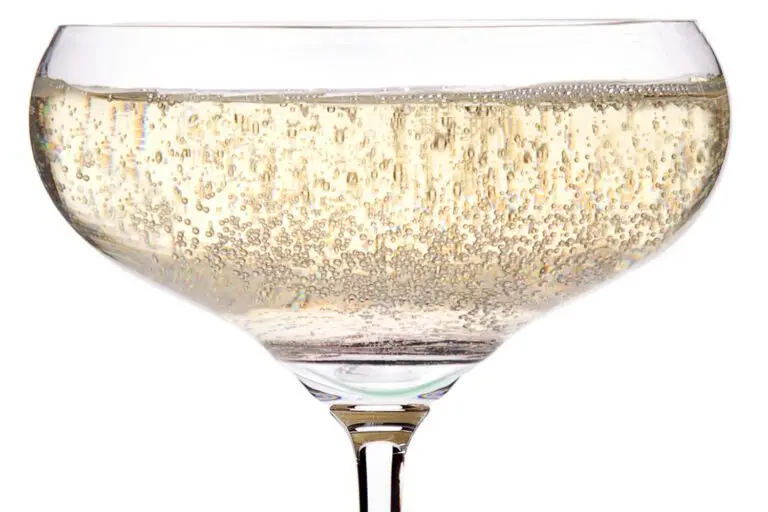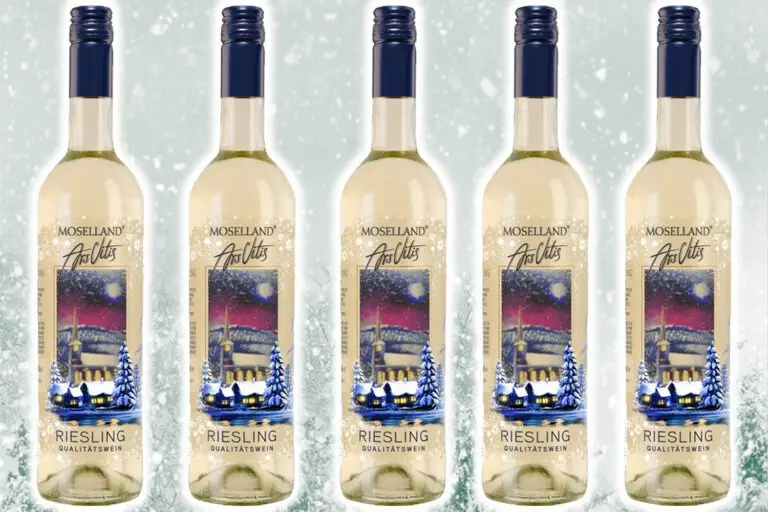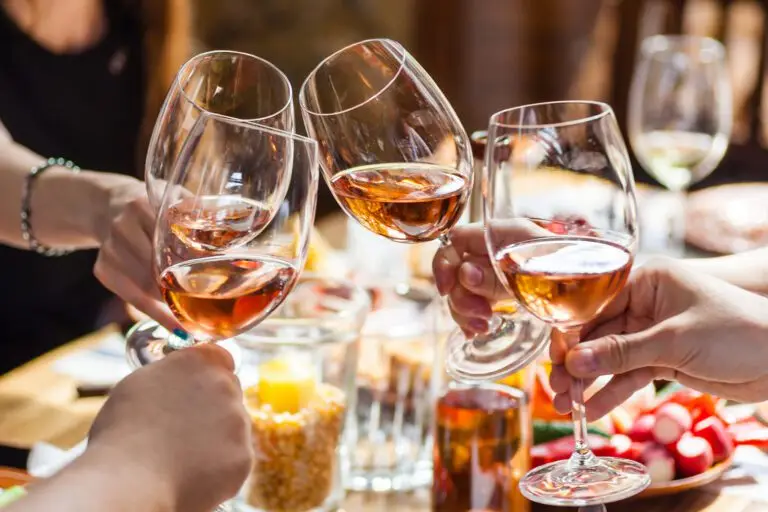Components are the basic building blocks of wine style, aroma, and flavor. They are derived from the chemical makeup of the grape, climate of the vineyard site, the weather of the vintage, timing of the harvest and winemaking choices in the cellar during fermentation, maturation, and bottle aging. Key roles in wine composition include residual sweetness, acidity, volatile acidity, tannin, bitterness, alcohol, and wood. Their balance determines wine quality, style, mouthfeel, and finish.
The combination and balance of components influence a wine’s appeal to different consumers. The distinguishing characteristics of wines can be used to determine quality in the glass. These characteristics affect individual preference. If you’re unable to find your favorite wine, search for wine originating from the same region, made from the same grape variety. That wine will often have a similar profile.
The grape itself has certain components that impact the style and flavor of a wine. Sauvignon Blanc, Chenin Blanc, Riesling, Cabernet Sauvignon, Pinot Noir and Barbera are high in acidity while Gewürztraminer, Sémillon, Garnacha, Carménère, Merlot and Malbec typically are not. Cabernet, Zinfandel, Shiraz/Syrah, Malbec, Nebbiolo and Sangiovese are high in tannin, while Pinot Noir, Gamay and Cabernet Franc have lower tannins. These component levels evolve during ripening and winemaking.
The winemaker’s first decision is the timing of the harvest. The goal is for components to be at appropriate levels for the region and style of wine. Chardonnay from Burgundy (France), Lake Erie (Ohio), Sonoma (California) and South Eastern Australia regions would have different levels of ripeness, acidity and sugar, based on the growing climate and harvest.
The warmth of the growing region and vintage heat accumulation impacts component levels. Warmer climates and vintages offer riper fruit with higher potential alcohol and lower acidity. This can also occur within Ohio’s Lake Erie and Grand River Valley regions, where a warm vintage will result in much more expressive fruit nuances and higher alcohol levels.
Two other components are bitterness and volatile acidity. Bitterness, often resulting from higher tannins, is typical in some Italian red grapes (Corvina Veronese, Barbera) and in Gewürztraminer. Low levels of volatile acidity are common in most wines, including wines with extended cask aging and in late-harvest wines. Volatile acidity at moderate levels adds to total acidity and lifts the nose of the wine in the glass. High levels become a flaw and can produce an unpleasant aroma reminiscent of nail polish.
Wood nuances are added by aging in barrel, cask or by using alternatives such as oak chips or cubes. Because wood is porous, small amounts of oxygen pass through the barrel and soften the harsh edges of acidity and tannin giving the wine subtle oak flavors. More than a small amount of wood character can sometimes interfere with food pairing due to the tannins/astringency introduced into the wine.
Perception of components is segmented throughout the mouth:
Sweetness – on the tip of the tongue
Acidity – on the sides of the tongue
Volatile Acidity – on the upper soft palate
Tannin/Astringency/Oak – dryness in the front of the mouth
Bitterness – on the back of the tongue
Alcohol – warmth in the back of the throat
Learning about components can help make pairing wines with specific entrées simpler.
Wine Components and Food Pairings
Sweetness – Dessert wines are best if they are sweeter than the dessert. Residual sweetness in wine helps ameliorate the heat in spicy foods, so an off-dry Riesling or Chenin Blanc are good wines to pair with Thai food.
Acidity – High acid wine will stand up to high acid foods such as tomato sauces, vinaigrettes, piccata, capers, citrus. Salty, rich, and creamy foods also pair very well with high acid wines, such as Sauvignon Blanc and sparkling wine. Pair lower acidity, low tannic red wines such as Grenache or Dolcetto with braised meats, aged cheeses, soy and flavorful fish.
Bitterness – Dry wines with firm tannins will taste sour or bitter when paired with sweet desserts. But serving a thick, beautifully marbled steak with a dry red wine is superb. The fat in the steak balances with the tannins in the red wine. Rich, creamy cheeses also make great choices.
Alcohol – Higher alcohol offers body, character, and flavor to wine, enabling it to be paired with richer entrées. Alcohol in wines such as Grenache and Zinfandel can heighten levels of spice. Avoid light foods, as they will be overpowered by the wine.
Why do we like the wines we like? And why do certain wines pair well with certain foods? Components. Or more specifically, the combination and balance of those components that determine a wine’s appeal.





